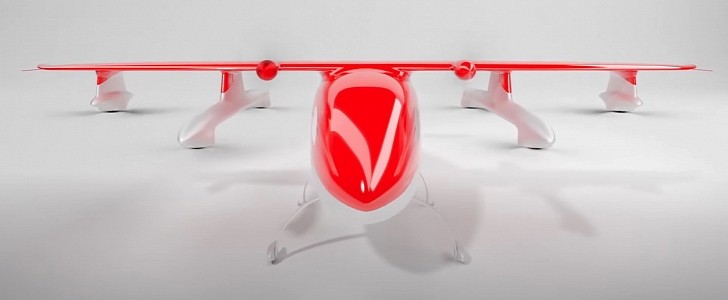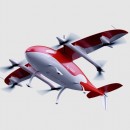Phoenix-Wings’s recently launched cargo drone is a German-engineered, heavy-duty UAV (unmanned aerial vehicle) that boasts an impressive wingspan-to-payload ratio and a unique design. Meet the PW.Orca.
Phoenix-Wings is based in Munich, Germany, and specializes in developing cargo drones with VTOL (vertical take-off and landing) capabilities. Its products focus on last-mile cargo applications and the PW.Orca is the manufacturer’s latest model.
What the PW.Orca heavy-duty drone claims to bring to the table is an “outstanding wingspan-to-payload ratio,” claiming to provide more payload capability than any other competitor in its class.
With a wingspan of less than 9.8 ft (3 meters), the PW.Orca boasts a unique design with a large nose canopy that offers easy cargo access. The drone can accommodate all applicable box size standards in its payload compartment and you can load and unload the cargo manually or automatically, through its rail system, nose canopy, or embedded payload doors. PW.Orca's batteries can be installed independently of the cargo, in the rail system above the cargo.
As specified by Phoenix-Wings, the PW.Orca drone can carry up to 15 kg (33 lb) in its modular, 96-liter (25-gallon) bay. As for its speed, the aircraft cruises at 68 mph (110 kph).
The range of the heavy-duty drone depends on environmental conditions and on how much load it has to carry. When loaded to the max (15 kg/33 lb), the PW.Orca offers an already impressive range of 60 km (37 miles) and that range increases with smaller payloads. With 10 kg (22 lb) onboard, the drone can fly 100 km (62 miles) on a charge, while with a 5 kg (11 lb) payload, it offers 130 km (80 miles) of range per charge.
Other notable features of the PW.Orca are its parachute system, redundant powertrains, actuators and sensors, and its ability to withstand harsh weather conditions. The drone can fly in winds of up to 28 mph (45 kph) and can withstand light rain and sea salt aerosols. It also has a low noise signature, which allows it to operate over populated areas.
There is no pricing info on Phoenix-Wings’ drone, but contacting the manufacturer will give you all the answers you need.
What the PW.Orca heavy-duty drone claims to bring to the table is an “outstanding wingspan-to-payload ratio,” claiming to provide more payload capability than any other competitor in its class.
With a wingspan of less than 9.8 ft (3 meters), the PW.Orca boasts a unique design with a large nose canopy that offers easy cargo access. The drone can accommodate all applicable box size standards in its payload compartment and you can load and unload the cargo manually or automatically, through its rail system, nose canopy, or embedded payload doors. PW.Orca's batteries can be installed independently of the cargo, in the rail system above the cargo.
As specified by Phoenix-Wings, the PW.Orca drone can carry up to 15 kg (33 lb) in its modular, 96-liter (25-gallon) bay. As for its speed, the aircraft cruises at 68 mph (110 kph).
The range of the heavy-duty drone depends on environmental conditions and on how much load it has to carry. When loaded to the max (15 kg/33 lb), the PW.Orca offers an already impressive range of 60 km (37 miles) and that range increases with smaller payloads. With 10 kg (22 lb) onboard, the drone can fly 100 km (62 miles) on a charge, while with a 5 kg (11 lb) payload, it offers 130 km (80 miles) of range per charge.
Other notable features of the PW.Orca are its parachute system, redundant powertrains, actuators and sensors, and its ability to withstand harsh weather conditions. The drone can fly in winds of up to 28 mph (45 kph) and can withstand light rain and sea salt aerosols. It also has a low noise signature, which allows it to operate over populated areas.
There is no pricing info on Phoenix-Wings’ drone, but contacting the manufacturer will give you all the answers you need.







